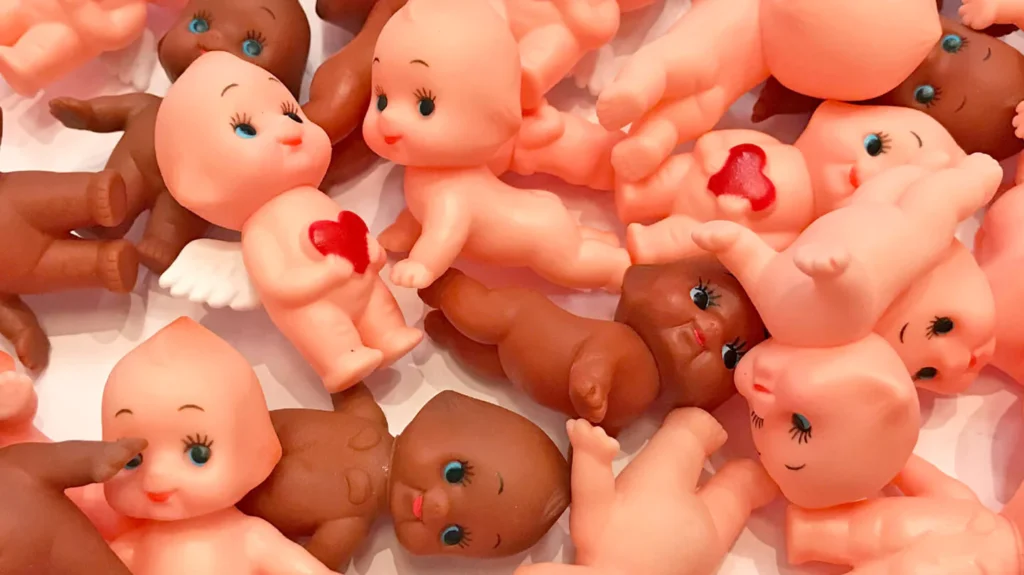In the realm of collectible dolls and figurines, few hold the enduring charm and nostalgia-inducing appeal quite like Kewpie dolls. These whimsical creations, conceived by the talented cartoonist Rose O’Neill, have captured the hearts of generations since their inception over a century ago. Born from the pages of comic strips, Kewpies quickly transcended their two-dimensional origins to become beloved toys and cherished collectibles, each one carrying a unique blend of innocence and mischievousness. In this article, we embark on a journey to uncover the fascinating history and evolution of Kewpie dolls, exploring their transition from illustrated characters to coveted collectibles.
The Genesis of Kewpie
The story of Kewpie dolls begins with Rose O’Neill, a pioneering female cartoonist whose creative genius gave birth to these iconic characters. In 1909, O’Neill introduced the world to the whimsical inhabitants of Kewpiedom through her illustrated comic strips. Depicted as baby cupid characters with distinctive features such as large heads, wide eyes, and tiny wings, the Kewpies quickly captured the imagination of readers with their playful antics and endearing personalities. O’Neill’s unique artistic vision and storytelling prowess propelled the popularity of the Kewpies, laying the foundation for their transition from the pages of newspapers to the shelves of toy stores.
From Paper to Porcelain
The transition of Kewpies from illustrated characters to tangible toys marked a significant milestone in their evolution. In 1912, the first Kewpie dolls made their debut as delicate creations crafted from bisque in Waltershausen, Germany. These early iterations faithfully captured the charm and whimsy of O’Neill’s original illustrations, with their delicate features and rosy cheeks enchanting collectors and children alike. As demand for Kewpie dolls surged, manufacturers sought to diversify their materials, leading to the introduction of composition versions in the 1920s and celluloid iterations in the ensuing decades.
Innovation and Expansion
The mid-20th century witnessed a period of innovation and expansion for Kewpie dolls, as advancements in materials and manufacturing techniques ushered in new possibilities. In 1949, Effanbee revolutionized the Kewpie doll industry by introducing the first hard plastic versions of the beloved characters. This breakthrough not only enhanced the durability of Kewpie dolls but also paved the way for mass production, making them more accessible to a wider audience. Concurrently, soft rubber and vinyl versions of Kewpie dolls emerged, thanks to companies like Cameo Co. and Jesco, catering to the evolving tastes of collectors and consumers.
The Enduring Allure of Antique Kewpie Dolls
While Kewpie dolls in various materials and forms have proliferated over the decades, it is the earlier bisque and composition versions that hold a special place in the hearts of collectors. Coveted for their vintage charm and historical significance, these antique Kewpie dolls are prized possessions sought after by enthusiasts worldwide. What sets these early iterations apart is not just their craftsmanship but also their connection to Rose O’Neill herself. Hand-signed by the illustrious cartoonist, these rare specimens offer a tangible link to the creative mind behind the Kewpie phenomenon, making them highly coveted among collectors.
Distinguishing Kewpies from Billiken Figures
It’s important to note that while Kewpie dolls share certain resemblances with the baby-like Billiken figures that debuted in 1908, they are distinct entities with their own unique characteristics. While both embody elements of whimsy and childlike charm, Kewpies are distinguished by their cupid-like features and association with Rose O’Neill’s beloved comic strips. This clarification is essential in understanding the rich tapestry of doll history and the diverse array of characters that populate it.
Conclusion
The story of Kewpie dolls is one of innovation, imagination, and enduring appeal. From their humble beginnings as comic strip characters to their status as cherished collectibles, Kewpies have traversed the realms of fantasy and reality, leaving an indelible mark on popular culture. Whether crafted from delicate bisque or resilient plastic, each Kewpie doll carries with it a sense of whimsy and nostalgia that transcends generations, reminding us of the power of creativity to inspire joy and wonder. As we continue to marvel at these enchanting creations, we pay tribute to Rose O’Neill’s enduring legacy and the timeless magic of Kewpiedom.







